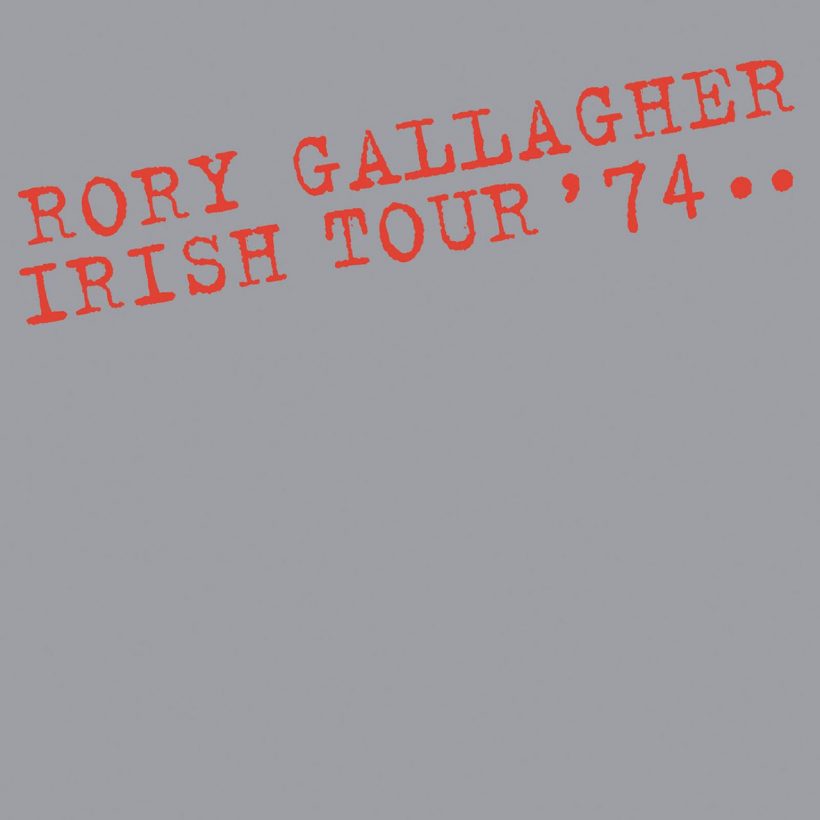‘Irish Tour ‘74’: How Rory Gallagher’s Classic Live Album Brought The People Together
The album remains a testament to how music has the power to reach the world’s most troubled places.

Rory Gallagher’s celebrated Irish Tour ’74 is a landmark release in more ways than one. As an artistic statement, it ranks highly among rock’s most monumental live albums, but it’s also culturally significant because much of it was recorded in Belfast at the very height of the Irish Troubles: a period when hardly any rock ‘n’ roll bands dared set foot in Northern Ireland due to the hazardous political climate.
For Rory Gallagher, however, Belfast’s inclusion in the itinerary was deemed mandatory. The renowned (and famously apolitical) guitarist and singer-songwriter held a special place in the hearts of the city’s music fans after he played a rapturously-received New Year show at Belfast’s Ulster Hall in January 1972, so his return to the same venue in January 1974 was hotly anticipated.
Listen to Rory Gallagher’s Irish Tour ’74 now.
“Rory loved Belfast. Just loved it,” Gallagher’s long-time bassist Gerry McAvoy told Classic Rock in 2016. “Anytime we hit the stage after 1971 you were aware that, apart from the odd cabaret turn at the Abercorn (where a 1972 bomb blast killed two and injured 130), none of the bigger bands would come back to play Belfast, it was starved of music. We’re professionals. We play as well as we could wherever we played, but it was a special situation in Belfast, something you could never acquire or attain at any other gig.”
Aside from the feted Ulster Hall show, Irish Tour ’74 included songs recorded at other favored Gallagher stomping grounds, Cork’s City Hall and Dublin’s Carlton Cinema, while British director Tony Palmer filmed the shows for the acclaimed motion picture of the same name. Both the audio and visual captures are still spectacular as they chronicle the mid-70s Rory Gallagher band – Gallagher and McAvoy supplemented by keyboardist Lou Martin and drummer Rod de’Ath – at the very peak of their collective powers.
In fact, even decades later, the excitement’s still palpable as the band launch into the record’s opening track – a coruscating version of “Cradle Rock” from Gallagher’s then-current album Tattoo – and from then on, Irish Tour ’74 simply can’t put a foot wrong. It showcases the band communing with the blues on louche and spirited versions of “Too Much Alcohol” and Muddy Waters’ “I Wonder Who,” before getting super tight with their leader on his traveling minstrel ode “Tattooed Lady” and then stretching out in style on mesmerizing extended renditions of “A Million Miles Away” and “Walk On Hot Coals” – both of which leave the listener in little doubt that they’re eavesdropping on a blues-rock masterclass.
Initially released in July 1974, Irish Tour ’74 was inevitably gobbled up by Gallagher’s fanbase and went gold in the U.K., but its commercial performance will always pale in comparison with its historical significance. Indeed, it remains one of classic rock’s most essential releases, not least because it remains a testament to how music has the power to reach the world’s most troubled places and bring people together during their darkest hours.
“Rory had two incredible qualities – he could play like nobody else, and somehow his personality was something the audience responded to in quite a loving and open way, because they just knew he was one of them,” Tony Palmer told Classic Rock in 2016. “The other thing is that there was absolutely no bullshit about him, so the real feeling at the end of every concert [of his] was an absolute joy of music, making real uplifting joy. It just lifted your spirits. You felt completely elevated by it.”












